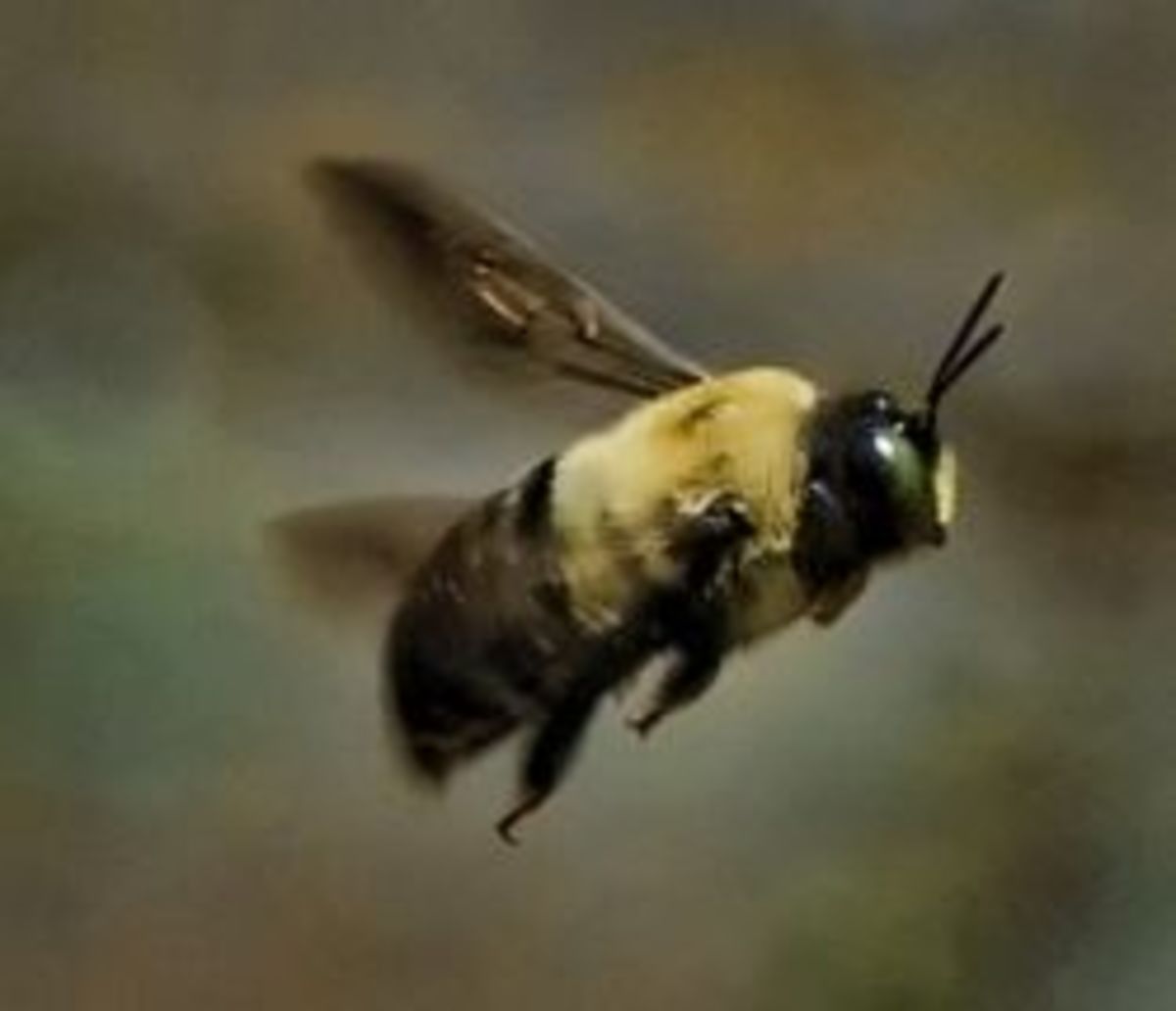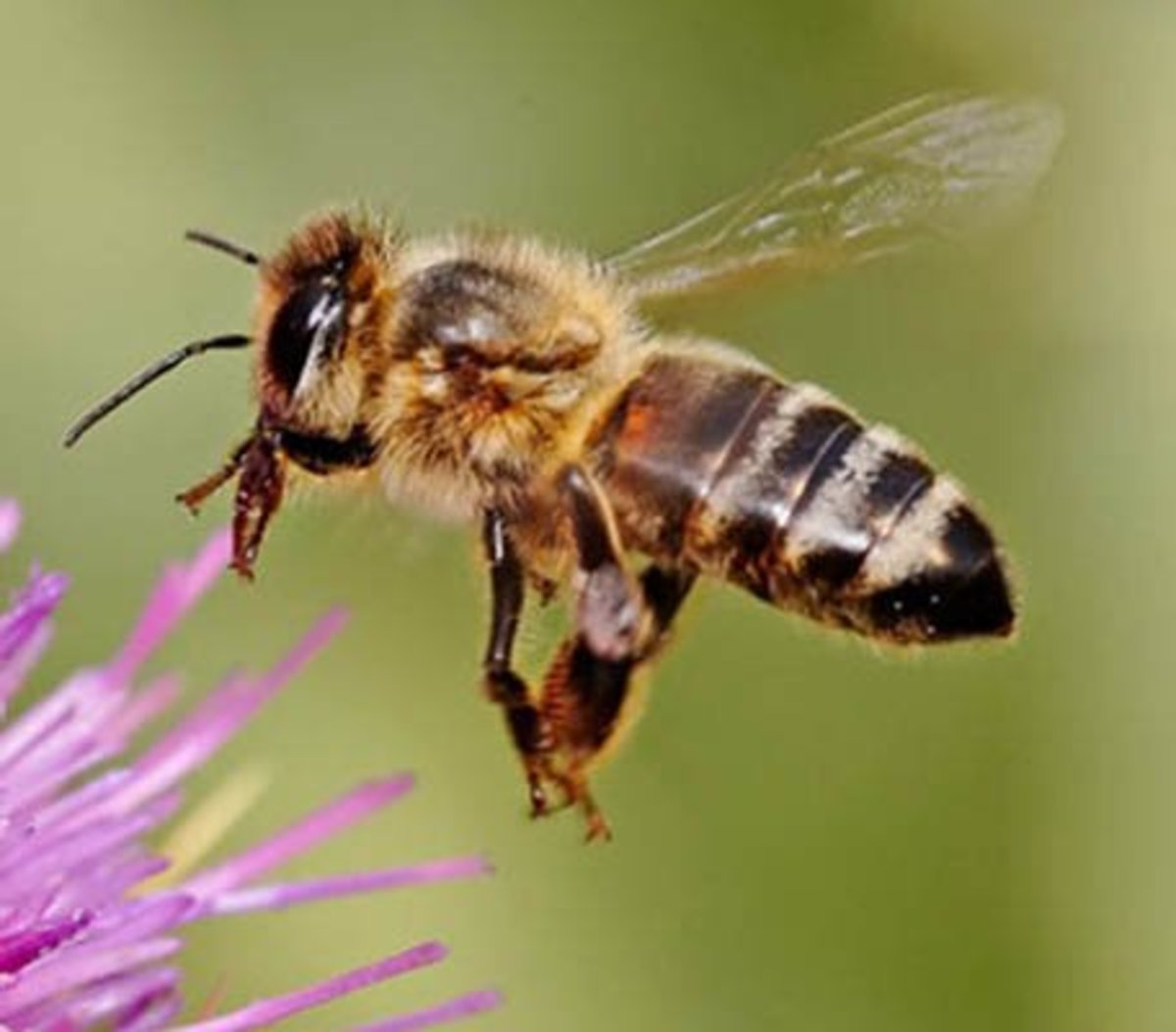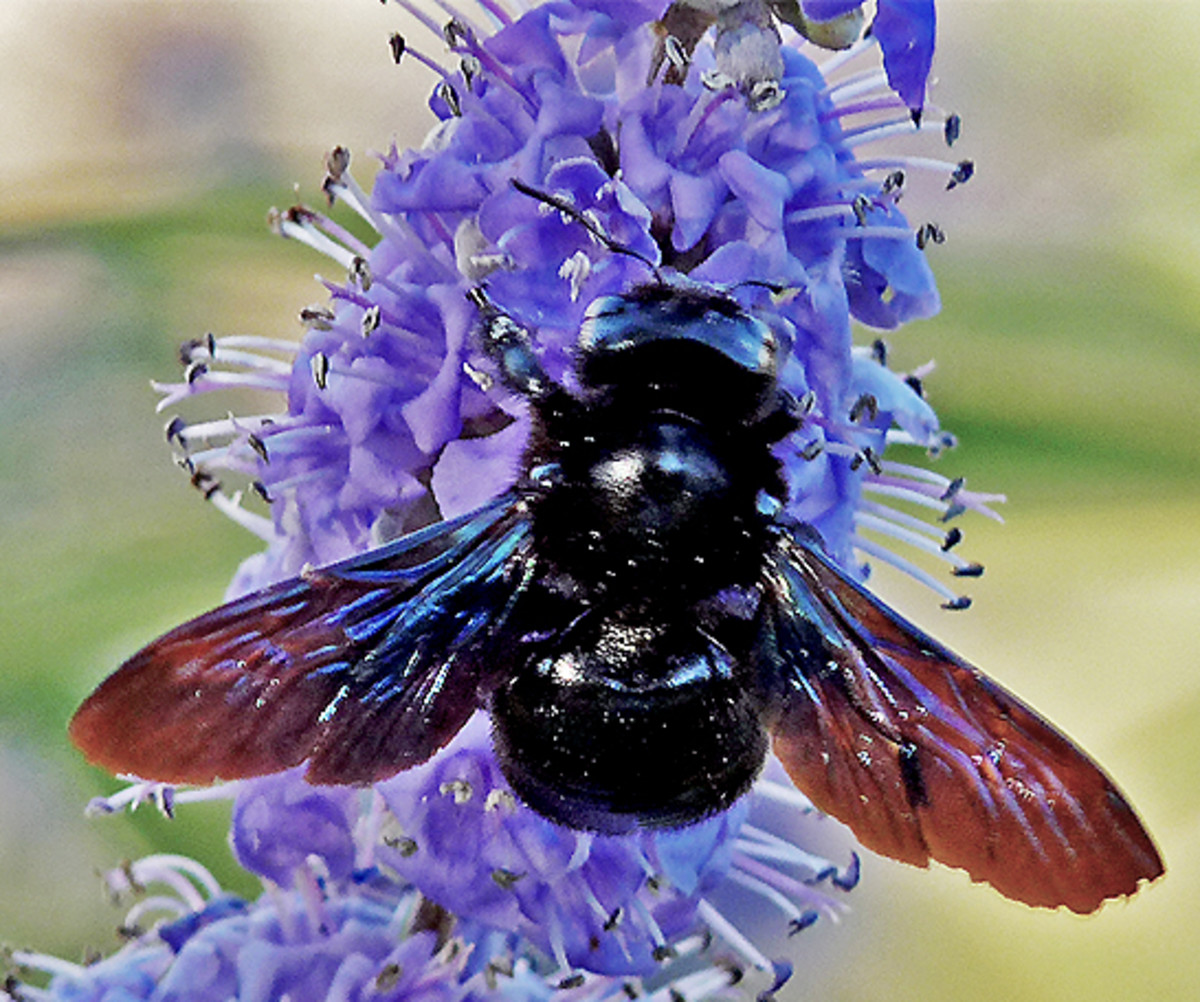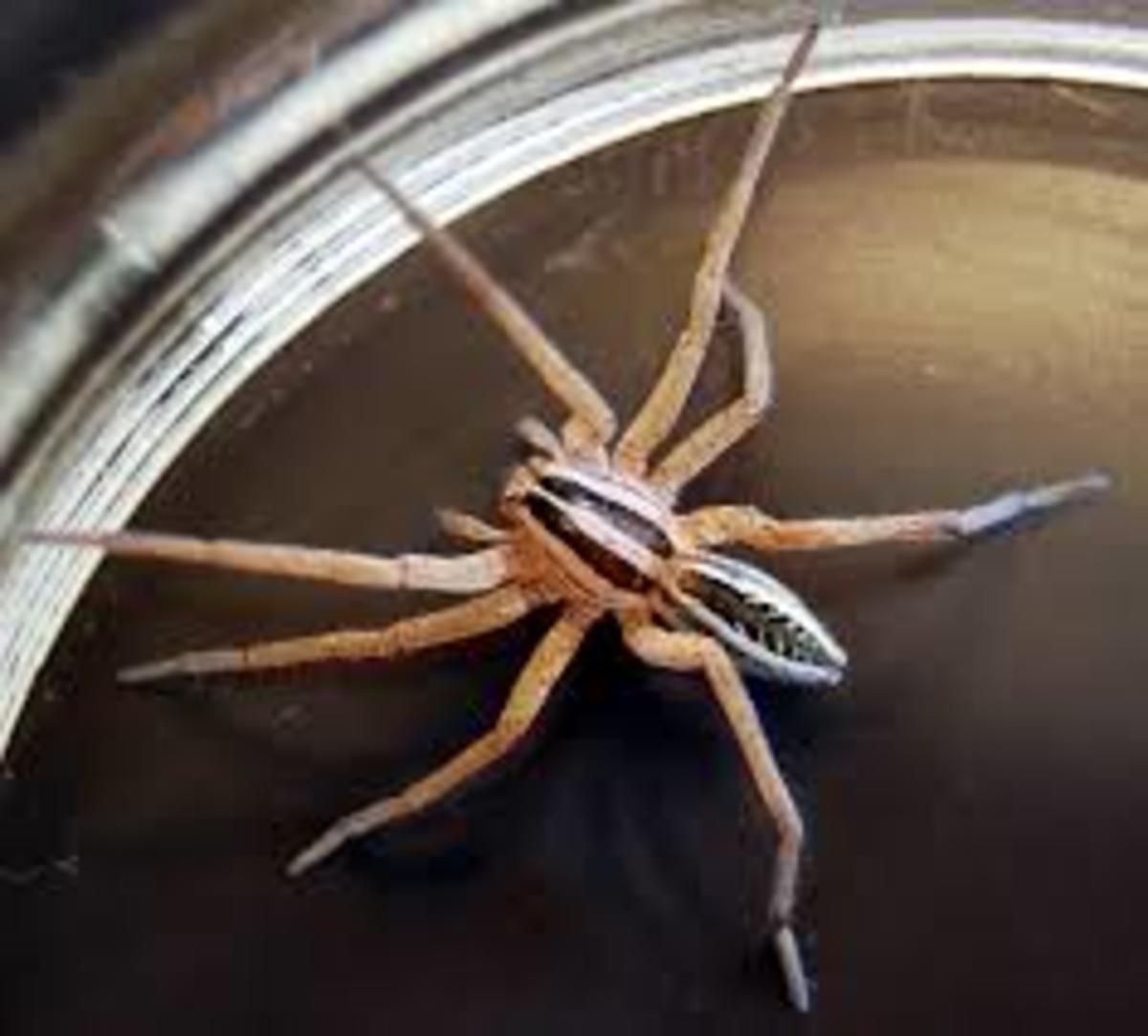Carpenter Bee Trap
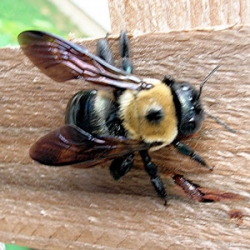
Avoid Wood Damage With a Carpenter Bee Trap
Carpenter bees can do a lot of damage to the wood around your home or deck in a short period of time. These yellow and black bees get their name because of the fact that they like to burrow into wood to build their nests.
While the damage they cause is often not structural, it is definitely unsightly. If no action is taken to prevent additional nesting, structural damage can occur over time.
A carpenter bee trap is a very unique, but simple device that can help prevent damage by trapping and killing these bees as they are attempting to nest around your structures.
(Image Credit to thatredhead4, licensed via Creative Commons with Attribution.)
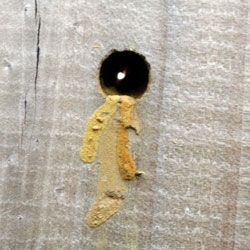
More About Carpenter Bees
Carpenter bees are typically solitary creatures. While they don't often nest together, they will nest near each other. So once a carpenter bee makes its first nest in your deck or wood structure, you can count on seeing additional holes appearing in other boards close by. These holes are typically perfect circles and are about 16 millimeters in diameter. A carpenter bee nest will usually just have one entrance, but may have many adjacent tunnels causing additional weakness to the wood.
Many people think that carpenter bees eat the wood, but this is not true. The wood is often reused to form cells in their nests, or is discarded. Often one of the first indications of carpenter bee activity will be the appearance of 'saw dust' on your deck or patio. They will often form their holes on the underside of beams or in board facing.
Male carpenter bees do not have stingers, so they are harmless. Female carpenter bees do have stingers, but are typically docile. They will not often sting unless captured in the hand or provoked in some other fashion. Either way, carpenter bees often strike fear into those who come into contact with them. They are formidable looking bees that appear to be aggressive due to their tendency to hover around their nests as they guard them. They will approach animals or people in an effort to scare them away from their nests.
(Image credit to Tobyotter - Licensed via Creative Commons with Attribution.)
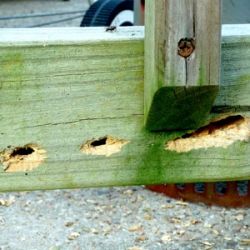
How Do Carpenter Bee Traps Work?
It is important that you take action against carpenter bees to prevent their nesting and the damage that will result from it. The damage may not just be limited to the holes and tunnels that they bore. Additional damage (as the picture indicates) can be caused by woodpeckers as they attempt to extract and eat the carpenter bee larva from the nest.
Carpenter bee traps are actually very simple devices. They usually are comprised of a small wood box that contains a single hole in the side that is roughly the same size as the typical entrance hole of a carpenter bee nest. On the bottom of the box, there will usually be a clear plastic bottle that is screw on for easy removal. Simply hang the trap next to an existing carpenter bee nest, and then sit back and wait.
The bees will enter the hole to explore it and will be drawn down into the bottle due to the light. Once they are in the clear plastic bottle, they will just buzz around attempting to exit it. They will continue to attempt to fly through the clear bottle, and will not go back up through the hole that they entered through because the interior of the wood box is dark.
It is a simple, but ingenious idea, and I have personal experience with them to confirm that this concept works very well. You can simply swap out the plastic bottle filled with dead carpenter bees for a new one!
The trap that I would recommend the most is the Bees N Things Plastic Bottle Carpenter Bee Trap. I like this trap the most because of its simple design. Once the plastic bottle captures a number of carpenter bees, you can simply replace the bottle with a new one.
The bees will enter the existing hole in the side of the trap. They are then drawn down into the bottle because of the light. Once inside the bottle, they are unable to figure out how to get out.
This trap is pre-treated with a homemade attractant by Bees N Things to make it even more effective. It is this style of plastic bottle trap that solved my carpenter bee problems. I hung one of these on my deck, and was catching and killing 12 - 15 carpenter bees each week. Priced at around $14.00, this is a very economical trap.
Another good option is the Bees N Things Carpenter Bee Trap. This model does not use a disposable plastic bottle to collect the carpenter bees, but instead uses a jar.
This is a good choice for environmentally conscious individuals who do not want to utilize and throw away plastic bottles. The jar is reusable. You simply empty the jar periodically, and reattach it to the bottom of the trap.
This carpenter bee trap works using the same principles as the previous trap. You simply hang it near an area where carpenter bee activity exists. The bees will enter the hole in the trap, and follow the light down into the clear jar. Once in the jar they are stuck. The will continually buzz around in the jar attempting to exit through the glass until they die.
This trap costs a few dollars more then the plastic bottle trap, but it is still inexpensive. It is also pre-treated with the Bees N Things Homemade attractant for added effectiveness.
(Image credit to Izik - Licensed via Creative Commons with Attribution.)
Video on Carpenter Bee Traps
Here is a video that will give you a better idea of how a carpenter bee trap works. The creator of this video made his own carpenter bee trap, so the design is a little different than the traps featured on the rest of the web page.
Carpenter Bee Traps on Amazon
Here are a number of different carpenter bee traps that are available from the most trusted retailer on the Internet - Amazon.com. All of these traps are very affordable and can be purchased for under $20.00. I personally prefer the 'plastic bottle' trap.
Problems with Carpenter Bees?

Have you experienced problems with carpenter bees boring holes in the wood around your home?
Do you have problems with carpenter bees or have any other tips or tricks to offer?
Any comments are welcome.

